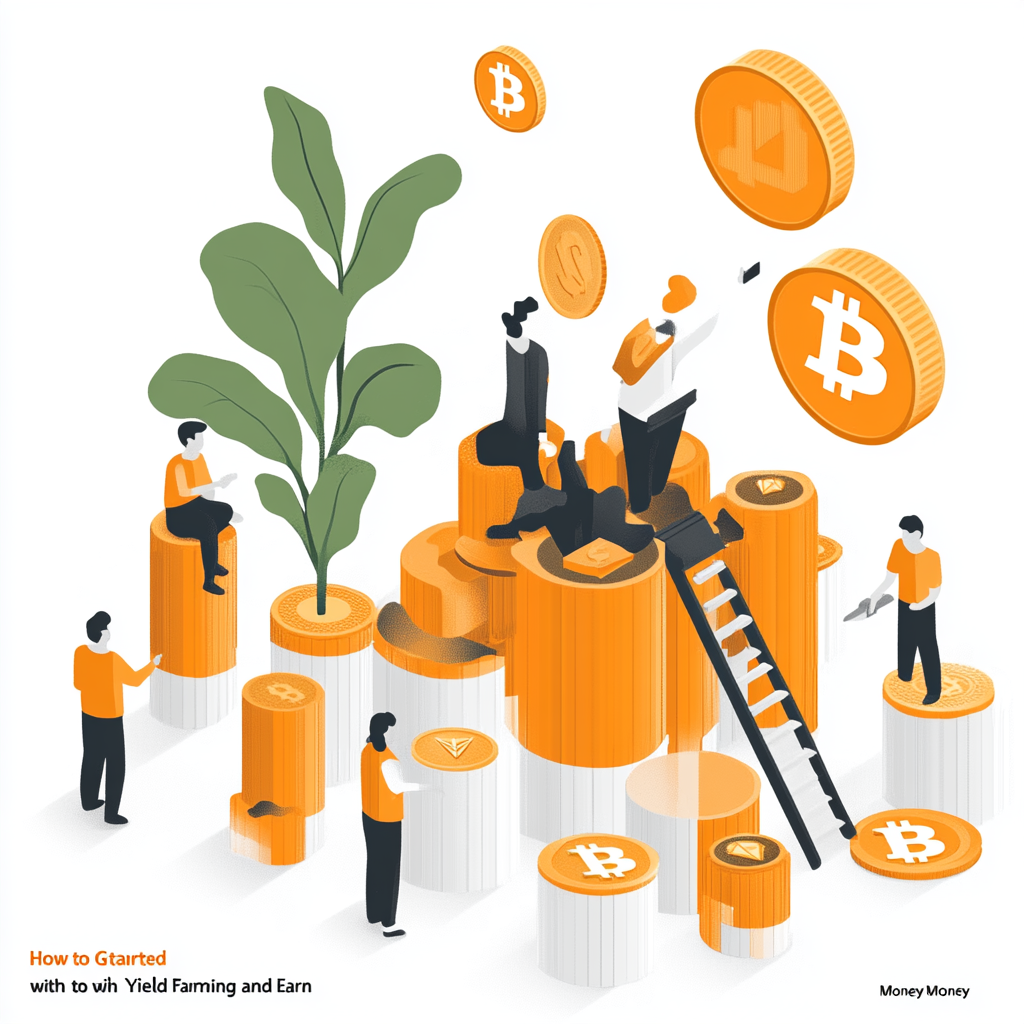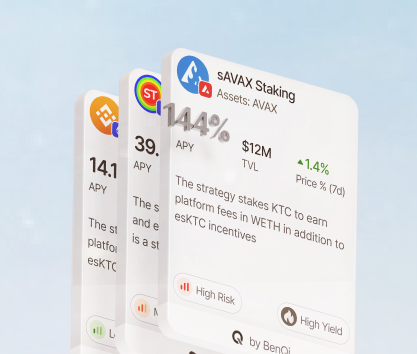One of the hottest topics in the crypto community right now is yield farming and its many forms. Investors have access to a wide range of tools capable of producing profits passively. It seems like a dream investment to many newcomers who do not yet understand the dangers of the crypto market. Learning the nuances of investing in this complex ecosystem can be very demanding. The DeFi sector features over 13,000 pools, several hundred different investment platforms, and a whole cohort of novel instruments unfamiliar to many beginners.
This incredible complexity often confuses those without any prior experience in financial markets. Even seasoned veterans feel overwhelmed. The lack of education among investors also plays a huge role. A study by Preply revealed that over 60% of all crypto holders do not understand how blockchain technology works. It is a concerning statistic considering that all decentralized protocols are deployed on blockchain and extensively use its features.
Yield farming in defi: what you need to know
Let’s start with clearly defining the terminology that we are going to use in this article. Here are some terms that you need to understand or align their descriptions with what you are about to read:
- Yield farming refers to the whole spectrum of novel investment opportunities in the decentralized finance sector where capital holders receive rewards in base assets, native or governance tokens, or other forms as interest rates paid by protocols.
- APR stands for Annual Percentage Rate and simply means the interest rate that you will receive after a year of holding capital in place. APY is the same but it accounts for compounding. In the DeFi sector, the compounding period is usually one day.
A DeFi protocol is a specialized platform that operates pools with investor funds that are used for various purposes to generate revenue. They can be programmed to lend assets, supply liquidity to automatic market-makers, and more.
What is DeFi yield farming?
An investor can use their digital assets in a variety of ways. Whenever they lock in capital in exchange for rewards, we call it yield farming. There is also another definition that specifically refers to an investment practice where you lock in funds and receive native tokens issued by the target protocol as rewards. For instance, you can invest in a BUSD-DAI pool on Goose Finance to receive native $EGG tokens as a reward at an 18.34% APY.
We are going to talk about the more general definition which refers to the selection of different approaches focused on generating passive income using cryptocurrencies.
Yield farming vs staking
Using PoS protocols and becoming a validator by running a node or joining a pool is often classified as a completely separate investment instrument which is fair as staking involves locking in funds directly on layer 1. Many investors believe that using layer 1 staking options is a safer route for capital allocation with blockchains like Ethereum or Bitcoin appearing trustworthy and reliable.
While returns on investments can be incredibly lucrative during bullish trends since your assets continue appreciating while generating additional tokens, profits plummet when prices go down. Interest rates in staking are close to that of US treasury bonds or high-yield bank accounts. For instance, the average return on ETH is 4% which is lower than US treasury bonds (4.11% in 2024) or the average return on deposits (close to 5%).
Investors engaging in yield farming in decentralized finance are often chasing higher rewards and exposing themselves to the corresponding level of risk. It is possible to achieve APY on base assets that reach double and triple APY on bonds. A good example is liquid staking and restaking on Ethereum. You can receive stETH on LIDO while earning 2.95% base APY and restake it on Kelp DAO for 3.04% APY while getting additional EigenLayer points and Kelp Miles which both provide utility and value to users of the Kelp DAO platform. The total comes to 5.99% APY.
Top strategies for maximizing returns in crypto yield farming
It is important to look for ways to improve gains. While some investors are happy with APYs that beat what tradfi can offer, smart capital holders do not like the idea of having an idle investment that could generate more. Exploring the complex world of decentralized finance is a time-consuming endeavor with many protocols offering unique schemes that require additional research and, often, first-hand experience.
Since the variety of investment tools can feel overwhelming, it is a good idea to have a system that allows you to quickly scan through the sector in search of a good target for capital allocation. Let’s discuss one of such approaches.
Maximizing crypto returns with yield farming
To reach the biggest yield number without overexposing a portfolio, one must follow a set of simple rules. These are just tips to help you pick the right investment option while avoiding some risks. However, they just cover the fundamentals and cannot be used as financial advice.
Here are the rules that you should follow when trying to build a portfolio that generates high interest rates:
- HighAPYs are often associated with high risks. Even DEXes that fiercely compete against each other, usually have APYs that are close to what you can get from conservative tradfi options. For example, ETH-stETH pool on Curve has a flexible 1.72% base APY that can reach 3% in certain months. DAI-MKR on Uniswap has a 2.95% base APY and a 6.19% 30-day average. These are solid numbers for a relatively low-risk investment. On the other hand, POPCAT-SOL on Kamino Liquidity is an obvious meme with 108,000% base APY.
- Be mindful of the underlying blockchain type. Many popular long-term protocols are deployed on Ethereum with some of the biggest pools in the industry focused on ETH and its wrapped/staked versions. Stablecoins are also a good target for a conservative investor. At the same time, Solana and Base are both known for the prevalence of scams, rug pulls, and memecoins that do not have any value aside from being highly speculative tokens with short life spans. As of the time of writing, Solana has over 800 tracked pools with the overwhelming majority of them being memes like POPCAT or RETARDIO.
- Invest only as much as you are willing to lose. Yield farming, just like any other type of crypto investing strategy, is a high-risk endeavor. You can take a significant loss due to price volatility, insufficient liquidity, faulty smart contracts, incorrectly estimated borrow APRs, and more. While solid risk management techniques, that we will cover below, exist and can mitigate some damage, you must be prepared for the worst-case scenario.
- DYOR. The “Do Your Own Research” motto so popular in the crypto community must be applied to the world of DeFi investing in particular since new projects appear regularly and many influencers are trying to convince their audiences to join the army of eventual bag holders in rug pull schemes. Take into consideration the founders and their backgrounds, technological innovations of the platform, supported blockchains, community sizes, and other criteria to find investment prospects that do not lead to a deep hole.
Examples of yield farming investment strategies
Let’s talk about some interesting methods of generating high interest rates. We will also cover a specific method of yield farming as a more specific approach involving earning native tokens. Note that we are not giving investment advice or endorsing any of the platforms mentioned throughout the article.
Here are some interesting strategies to use:
- Focusing on liquid staking. The popularity of LIDO with its $26.15 billion TVL is the consequence of its unique product allowing investors to keep their ETH staked to earn rewards from the main net while using staked tokens for various purposes like restaking or borrowing stablecoins and other digital assets. Depending on the popularity and reliability of the protocol, you may get interest rates from 3% to 10%. For instance, MakerDAO has been paying 6.75% on average for several months in a row.
- Investing in alternative blockchains. While Bitcoin and Ethereum still dominate the market, some alternative chains keep trying to increase their market share by investing heavily in the DeFi sector as a whole. Many decentralized exchanges operating on networks like TON, Base, and Solana offer lucrative investment opportunities to their audiences. DeDust is a notable example of a project deployed on TON that pays huge rewards for stablecoin investments. The TON-USDT pool offers a 1.37% base APY and up to 35% in TON rewards.
- Farming native tokens issued by protocols. It can be a viable strategy in the short term. Investors should always remember the fast pace of inflation that affects all coins from decentralized finance protocols. However, if you take advantage of high yields and liquidate assets in time, the profits may impress! Orca is a good example of a project on Solana that focuses on attracting users with generous rewards in native ORCA tokens. The INF-ISC pool has a high base APY (244%) and a 161% reward APY on TOP. The price of the asset dipped below the initial value roughly 6 months after the launch but recovered at the beginning of 2024 only to drop again in April. Some enthusiasts believe that it may go back up again.
The best practices for yield farming
It is important to stick to projects that have a proven track record. While it is impossible to predict the performance of any given new project, you should either:
- Try to get in as early as possible and treat your investment as a gamble in a Ponzi scheme.
- Wait for the initial hype to settle and make up your mind afterward.
If you follow the first route, focusing on reading the news and actively participating in communities on Reddit and Discord should be a priority as you must be among the first investors and hope to cash out when the price rises to an acceptable level. Limiting position sizes to the bare minimum is a good idea since many of promising protocols fail spectacularly.
More conservative investors often wait until the price somewhat stabilizes to decide whether they want to invest in a protocol and start accumulating native tokens. In such cases, estimating the effect of inflation on the price is quite important. You should consider potential price dips when calculating profits.
Selecting the right protocols for investment activities is hugely important for the long-term success of your operations. With hundreds of active projects to choose from, picking platforms that are capable of producing good yields is a challenge even for experienced veterans. The sheer number of tracked pools can feel overwhelming. For instance, DeFiLlama has over 13,000 pools across 200 protocols and over 30 chains. This variety is simply overwhelming.
Unlike yield aggregators like Rivo.xyz or DEXes such as DeDust or Uniswap, protocols that focus on farming do not have the same range of functionality or versatility. People do not come here for the utility although many farms are offered by decentralized exchanges. Yield farming is more about trying to maximize potential profits and chasing big numbers. Many experts do not believe that it is a good long-term investment strategy.
You should keep all of the above in mind and make a selection based on your preferences. Here are some tips that may work for your particular portfolio:
- Pick platforms that have the goodwill of the crypto community and offer diverse investment opportunities. Accumulate multiple types of yield farming rewards.
- Work with blockchains that are not prone to allowing outright scams. Ethereum and Bitcoin are better than Solana or Base in this regard.
- Do not concentrate market positions. It is a better idea to spread your investments across several pools to be less vulnerable to price volatility.
- Seek easier onboarding. Decentralized protocols are notorious for their complexity and poor user experience. Look for platforms that you understand and can use effectively.
Here are some projects that you should check out:
- Orca is a DEX on Solana that works with memecoins and pays users with native tokens for their contributions. TVL numbers vary with some pools having less than $10,000 and others reaching several million US dollars in value. Some pools are quite interesting. For instance, the PYUSD-SUSDE one is for staked and wrapped stablecoins. It has a 0.2% base APY and 1.85% reward APY. Use it for restaking and increasing exposure for additional earnings.
- Convex Finance is another great platform for people interested in restaking their coins. Two good examples of pools for wrapped and staked tokens are FRAX-DAI (2.36% mixed APY) and ETH-STETH (2.5% mixed APY). One of the most lucrative options is the three-sided USDT-WBTC-WETH pool with 2.07% base APY and 2.73% in CRV and CVX rewards. If you do not want to leave the Ethereum ecosystem while farming yields, it is a good choice!
- Merkl is an Arbitrum-based protocol focused on incentive providers allowing users to invest in a variety of DeFi protocols without the need to switch between different interfaces. The platform has multiple interesting choices for yield farming in particular. For instance, the two-sided WETH-USDC pool offers up to 168% in ARB rewards while WBTC-WETH is an even better deal with a hefty 174% APY. Merkl supports over 20 chains, has more than 400 ongoing campaigns at any given moment, and has distributed $48 million in rewards so far.
Understanding the risks and rewards of crypto yield farming
All investors must remember that the crypto industry in general is a dangerous place for someone without any experience or willingness to learn and improve continuously. The prevalence of purely speculative digital assets, complex multi-faceted investment schemes, maturing technology, and other issues may prevent you from achieving your goals even if you follow all traditional tips like diversifying your portfolio, hedging positions, and doing your own research.
Risks in crypto yield farming include technological imperfections of smart contracts, impermanent loss due to price fluctuations, rug pulling by protocol founders, the absence of a regulatory framework protecting consumers, and more. Navigating this complex landscape is quite hard even for the best investors with years of experience in retail trading and financial management. Newcomers are strongly encouraged to learn and expand their knowledge!









